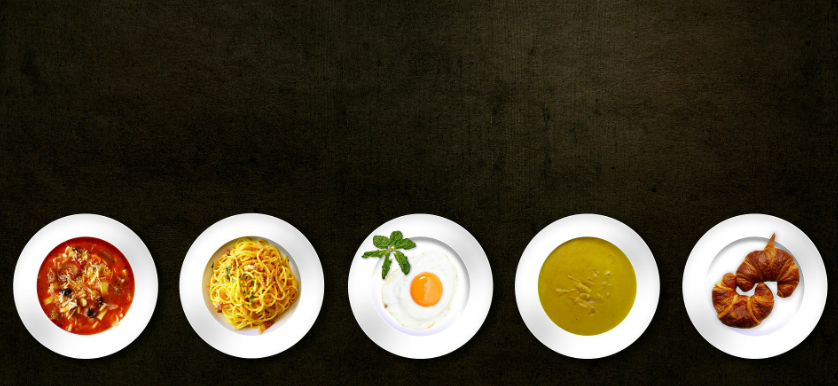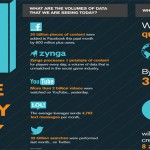IKEA: A kitchen for our future selves

Think of how life will be for us, 10 years from now. Think of our homes and how these will adapt to living in 2025. Imagine the most futuristic model possible. Now incorporate practicality into it.
Practicality is one feature of IKEA’s products, besides pricing and quality, which made the Swiss housing goods retailer so sought after and famous worldwide.
And with big fame, comes big responsibility, but also more possibilities to actually change the normal pace of things. Thus we present you IKEA’s concept for a future kitchen, in the year 2025. The model is based chiefly on practicality and the needs of our future selves.
First off, IKEA took into consideration spatial limitations. In the current rhythm of development, the human race will predominantly occupy smaller places, mostly within urban settlements. Therefore, with our homes possibly decreasing in size and our needs surely increasing, the company holds technology as the ultimate answer to satisfying the latter and solving the former.
Other factors incorporated in IKEA’s The World in 2025 vision refer to:
- Resources such as water, energy and food, which will steadily become more valuable and, inherently, more expensive;
- Dietary options will also revolve more around protein intake than meat/dairy/vegetable type;
- Jobs will be mostly autochthonous as technological advancements will allow geographically-dispersed teams from various industries to work in this manner;
- On the same terms, computers will be incorporated in almost anything you can possibly imagine;
- One last great assumption refers to Eastern cultures which, considering their high growth rates, will be integrated into Western cultures. Already there is a migration of cultural elements going from Eastern nations like Japan and China to Western nations, via social media mostly.
IKEA then proceeded to build their future kitchen on these perspectives. The end-result revealed a product which is deceivingly uncomplicated and simple: the room is small, the furniture is modest-looking and the number of modules is limited to only a few. However, this modest-looking kitchen has more technology and possibilities incorporated in it than any existing kitchen in 2015.
Storing spaces
First off, IKEA is convinced that food and other goods will be delivered to us by means of unmanned vehicles and drones. Therefore, storing a lot of comestibles and other necessities will become rather obsolete. Hence, there will be no need for large storage spaces but rather smaller, well designed modules, with embedded “casual technology – unobtrusive, embedded, yet aware.”
The pantry is thus incorporated into one module which cools or heats food (according to the need), keeps the easily perishable items at sight while others, such as vegetables, are stored in terracotta boxes, which are naturally cooler spaces. Separate see-through boxes will maintain the desired temperature for each type of product it stores.
Recycling procedures
The next burning issue is recycling. This is already an increasingly pressing responsibility that we feel today. However, in 2025, there will be no more questions of who is recycling and who is not, because everyone will be engaged in this operation.
In fact, recycling will be taken so seriously that cities will fine those who do not dispose selectively of their trash. It will be the same with not paying your taxes.
Nonetheless, recycling will not be performed in the same manner as we do it nowadays. The process will significantly improve due to the technology embedded in our future kitchens. Sink waste will undergo a process of selection, namely leftovers will be collected into a puck, from which all water will be extracted. The puck, odorless and small-sized, will then be gathered by the municipality. The resulting extracted water will be directed towards an integrated sewage system that feeds indoor plants.
Non-organic waste is also automatically processed. More precisely, cans, bottles, plastics are crushed and modelled into a small-sized object to which a label is added, naming the containing material and possible future uses.

The table of all tables
The highlight of IKEA’s entire concept is its dining table. How does it look like? A plain old dinner table that does absolutely nothing to catch your sight.
Does it have any hidden features? Yes, tens.
With one touch on the table surface, the plain wooden kitchen furniture becomes a preparation surface, a heater, a recipe book, a scale, an area where children can play.
You can weigh any product, place ingredients on it and the table will select recipes based on what items you already own, select a timer, add as many pans as you need, set temperatures and timers for each pot or pan, keep your coffee/tea warm and multiple other wonderful functions.
All these features actually incorporate the actions performed by several other kitchen modules and appliances.
Altogether, this kitchen seems almost too far-fetched to become a reality by 2025, but in actuality, the technology behind this table is not that far away. It is already available and quite advanced in some areas of expertise, such as the IT industry’s Augmented Reality gadgets. These however, need not only to be improved for private use, but also be mass produced and reasonably priced so that they can reach a greater number of potential clients.
Coming back to IKEA’s plan, a camera – along with a projector, placed above the dining table will record, process and project data on the surface of the board. A layer of induction coils creates the network. Brought together, these features allow the recognition and manipulation of any food item, dish, or kitchen utensil placed on the counter’s surface.
This is the kitchen and life that IKEA envisions for humanity, ten years from now. Small in size/scope? Yes. Practical? Definitely. Technologically packed? No doubt about it. The only downside is that we still have to wait for it to become reality.
Image source:

Tags: Innovation, Knowledge and Innovation performance





